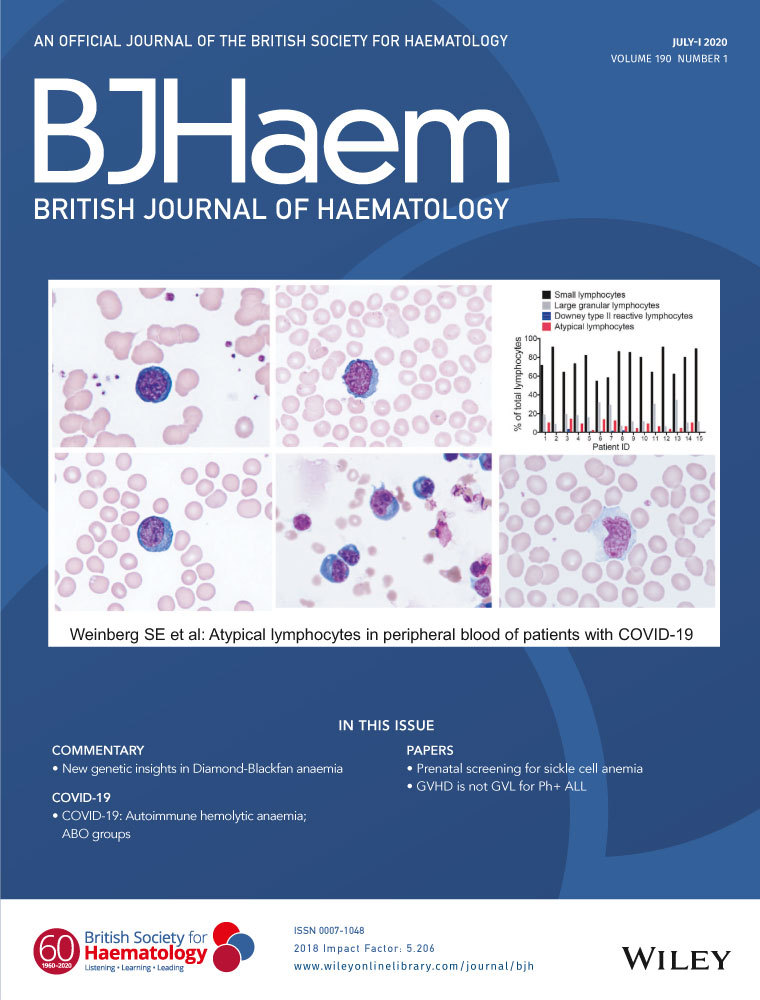Commentary on sickle cell non-invasive prenatal testing article
In a seminal Lancet paper published in 1997, Dennis Lo, a clinical biochemist from Hong Kong working in Oxford with Jim Wainscoat, defined a technique that would transform the future of prenatal diagnosis (PND). He described how he and his colleagues were able to amplify fetal-derived Y-chromosome sequences in plasma samples drawn from pregnant women carrying male fetuses (Lo et al., 1997). This made it possible to simply collect a blood sample from a pregnant woman and identify unique fetal DNA characteristics from it, without needing invasive PND, which carries a 0·5–1% risk of miscarriage.
Since the first reports describing non-invasive prenatal testing (NIPT), an explosion of technologies, both academic and commercial, has taken place, driven by technological improvements in high-throughput DNA analysis and bioinformatics. Ideally, NIPT would not only be risk-free to the pregnant woman but should also be sensitive and specific, and utilisable in early pregnancy. This would allow an at-risk couple to make an informed decision in a timely manner.
It is worth noting that <10% of circulating cell-free DNA in early gestation is of fetal origin, and the problem has always been how to tell which cell-free DNA is of maternal and which of fetal origin. Initial efforts in NIPT focussed on identifying Y-chromosome derived sequences, making it easy to identify material from fetal origin. Work in the 2000’s by Lo and others (Hahn et al., 2007) allowed diagnosis of fetal aneuploidy and paternally inherited fetal mutations, where risk of false negatives is minimal.
However, identifying single-point mutations that cause genetic disorders in recessively inherited monogenic diseases, like sickle cell disease (SCD), have to date been fraught with technical challenges (Breveglieri et al., 2019). To identify a fetal-origin point mutation from a sea of maternal DNA, 50% of which contain the same mutation, made it impossible to diagnose fetal disease without having access to DNA material from the father or siblings. One way to circumvent the need for paternal DNA source material was described in 2008 by Lun et al. (2008), in which the relative abundance of wildtype alleles with respect to mutant alleles (relative mutation dosage) was utilised to infer fetal genotype. This was further refined in 2012 when Barrett et al. used a digital polymerase chain reaction (PCR) technology to amplify fetal DNA (Barrett et al., 2012), allowing very small source material to be informative. However, these techniques were difficult to replicate, and produced false-negative results in samples with low amounts of fetal DNA.
In the current paper, van Campen et al. (2020) demonstrate 100% clinical sensitivity and clinical specificity in identifying affected fetuses by using technologies that allow use of fetal DNA from maternal plasma samples from 8 weeks’ gestation onwards. The authors ‘barcoded’ fetal DNA molecules with unique molecular identifiers, making it possible to accurately count the input material after PCR amplification and targeted massively parallel sequencing assay-based estimation of fetal fraction. The authors describe a work pipeline that allows high sample throughput and short turnaround time, making this a feasible approach in population screening of at-risk pregnancies. The method can be universally applied to affected [homozygous haemoglobin (Hb)SS], heterozygous (HbAS/ HbAC) and importantly does not require DNA samples from the father or siblings. However, there continue to be limitations, with accurate results produced in only 83% (35/42) of the samples analysed; in six cases there was insufficient free fetal DNA to make a diagnosis, and in one case a fetus with HbAS was incorrectly diagnosed as having normal Hb (HbAA). Although this mistake would not be expected to significantly influence reproductive choices, it is still worrying. Overall the performance of NIPT in this, and other similar studies, is still significantly inferior to that of invasive PND and further advances need to be made. It is reaching the point where it may be useful as part of the prenatal diagnosis algorithm, possibly as way of reducing the numbers of women undergoing invasive PND.
It seems likely that accurate and affordable NIPT will be available for SCD in the relatively near future, as further technological advances are made. It is potentially much cheaper than invasive PND, which requires sophisticated fetal medicine units, and may have a particular impact in low- and middle-income countries where SCD is most prevalent.




